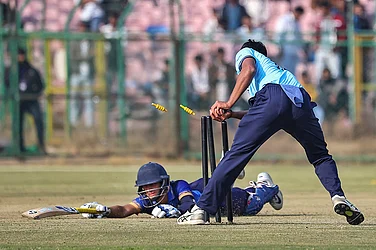Blame it on Stanley Donen for making that silly rom-com Blame It On Rio and creating an impression that your wildest fantasies would come true the moment you set foot on the golden beaches of this city. Many a tourist, inspired by the film, have rushed to the sands of Copacabana, only to find that it’s not a topless beach. But Hollywood’s take on forbidden love made people fantasise about Rio as a Garden of Eden where they can be—to paraphrase Michael Caine’s last words in the flick—young once again.
Actually, it was like a paradise when Europeans landed here in 1502. Tired, dirty and hungry from months of travel in rickety ships on choppy waters, the Portuguese made a landing on the sands of what was then a small hamlet of an indigenous tribe. To their surprise, the Europeans came across bronzed men and women who spent all their time plucking fruits from trees, fishing in blue waters, sleeping in their hammocks, smoking tobacco in their wooden pipes and making love on silvery sands. For the white men, coming from an Europe wracked by the Inquisition, this was a fantasy from a lost Arcadia. But soon, swallowed by European diseases and decimated by the invaders’ greed, the native paradise was gone. The new settlers banished them from their own land and started exploiting its riches to be sent to Europe. Over the centuries and generations, the hamlet turned into a city along the beaches and forests—an uneven and unequal growth.
Now it’s a city of six million and glass and steel towers dot its skyline. It has all the problems of poverty, crime and disease that all big cities in the emerging world have. Life can be nasty, brutish and short, especially for those born on the wrong side of tracks. But it has not abandoned the fantasy of its original inhabitants. The Cariocas (as the city residents are called) still worship people who create fantasies. Many of those heroes are dead and gone, but they still live in the city’s collective imagination. Close to the Ipanema beach, at the Veloso bar, men still get sloshed while recalling the story of how Vinicius de Moraes, a poet, diplomat and singer, and his pal Carlos Jobim saw a green-eyed girl coming back from the beach and composed the famous song, The Girl From Ipanema, on the spot.
Many came from outside to partake of the Rio magic. At the height of his fame, Osron Welles arrived here in 1942. The American director’s intention was to make a film and go back. But he just couldn’t leave, as he lived up his life in the city’s bars and beaches. By the time Welles left Rio, he hadn’t shot a single frame. Instead, he ended up inventing a drink called ‘Samba in Berlin’, a mix of cachaca, a local brew made from sugarcane, with Coke. They still serve it at some city joints. They still tell similar stories about Carmen Miranda and Janis Joplin, two other pilgrims.
Many outsiders do not get it, but the Rio Carnival’s main attraction, the samba parade, too, is a story-telling exercise in which reality is transformed into fantasy, and vice-versa. The parade is a show put together by Samba schools based in the favelas, the urban slums that house the city’s poorest. Each school, with 5,000 plus drummers, dancers and spectacular floATS, tells a story—from mythology to space exploration—with special songs. To the outsider, the samba parade is all about frenetic dancing by sultry bodies to the pounding rhythm of drums, but to the Cariocas, it is their annual pilgrimage to a fantasy land, where the poor become big stars and the rich are mere spectators.
Just like the Carnival, the Cariocas have bent the rules of life in football too, creating another form of fantasy. Brought here by the British in the late 19th century, the sport became something else when the ball came in contact with the tough legs of poor Cariocas, who used the game to defy their lives of deprivation. The football pitch became a performance stage for the poor; the rich watched it from the margins. It was in Rio that the sublime Garrincha, considered a cripple as a child because of his twisted legs, became a magician with the ball. They still paint his faces on the walls of Rio. He still fires the imagination of poor urchins in favelas.
But Rio is not a fantasy town. It’s a city with real lives and real problems. But it has a way of bending reality. It knows how to make fantasy look more real. It happens during the Carnival. It happens in football. It will happen now, as the city hosts the biggest sporting spectacle of the world.
By Shobhan Saxena in Rio


























